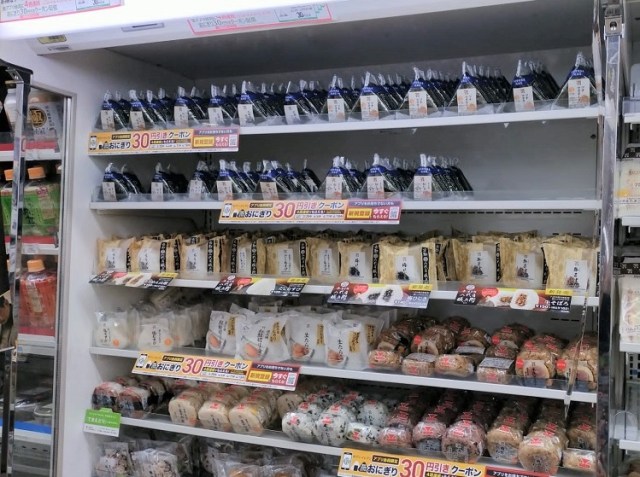
A lot of the rice balls on convenience store shelves include oil, but it’s not to make them taste better.
Among the many wonderful things at Japanese convenience stores, perhaps the most wonderful of all are the rice balls, or onigiri, as they’re called in Japanese. Tasty, reasonably priced, and relatively healthy, you’ll find convenience store onigiri with all sort of fillings, such as salmon, chicken, and plum.
But there’s one ingredient present in a lot of convenience store onigiri that even most Japanese shoppers aren’t especially conscious of: oil.
▼ 油 = oil
Specifically, it’s vegetable oil that many convenience store onigiri have. This isn’t a new development, but since it’s something a lot of people aren’t aware of, every couple of years it gets some people in a stir when someone notices/points out “oil” on a convenience store ingredient list, like in this tweet posted this week with a photo of a plain slated rice onigiri from convenience store chain Family Mart.
▼ “Make it with just rice and salt,” the poster pleads.
米と塩だけでつくってくれよ pic.twitter.com/Lqnk6vWVye
— 健康最高 (@yrzXlZARNuPcPsv) March 26, 2023
You might assume that the oil is added as a cheap but unhealthy way to make convenience store onigiri taste better, but the truth is actually more complicated, with no fewer than three reasons for the oil. The first is texture. Adding oil to the rice before it’s cooked creates a coating for the individual grains, so that even though they’re pressed together and retain their rice ball form, there’s enough space between them for a light, fluffy consistency.
“But wait, what about homemade onigiri? Those don’t have oil in them,” you might be asking. That’s true, but unlike onigiri made at home and then eaten soon after, convenience store onigiri are made at a factory, then shipped to the chain’s branches and stocked on refrigerated shelves until they’re purchased. Without oil, the passage of time and low temperature would make the rice clumpy and hard.
The second reason has to do with how convenience store onigiri are made. Rather than being pressed by hand, they’re made with a mechanical press. The oil helps prevent rice from sticking to the machinery, which keeps the shape of the onigiri nice and consistent.
And finally, the oil in convenience store onigiri is there because of how the rice balls are packaged. They have to be wrapped in something, usually plastic, and just like how the oil keeps the grains from sticking too closely to each other, it also keeps the onigiri from sticking to the inside of its packaging, so it can be removed without inadvertently tearing off a piece of the rice ball.
▼ If this onigiri was poorly formed or sticking to its package it might spill its beefy filling before you can bite into it.
All that said, not every convenience store rice ball is made with oil. It seems like the ingredient is more common with onigiri that don’t have a nori (seaweed) wrapping.
▼ This sardine and sansho spice onigiri has oil in its ingredient list…
▼ …but this salmon onigiri, with a nori wrapper, doesn’t…
▼ …and neither does this seaweed-equipped salmon onigiri.
And thankfully, even when convenience store onigiri are cooked with oil, it’s not like the rice was boiled in a 100-percent pot of the stuff. The salt onigiri from 7-Eleven pictured at the start of this article has a total of 0.9 grams of fat, and the onigiri pictured in the tweet, from rival chain Family Mart, has only slightly more fat, 1.1 grams. So even if convenience store onigiri aren’t always entirely oil-free, they’re still a pretty healthy snack choice, so the main thing to worry about is whether or not you can open the wrapper the right way.
Source: Hachima Kiko, Shukan Josei Prime
Photos ©SoraNews24
● Want to hear about SoraNews24’s latest articles as soon as they’re published? Follow us on Facebook and Twitter!
Follow Casey on Twitter, where he misses the Kaizoku Musubi rice balls from Iwakuni Station.

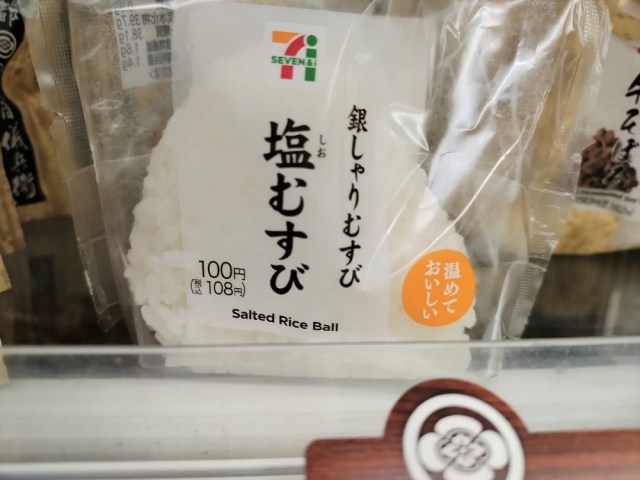
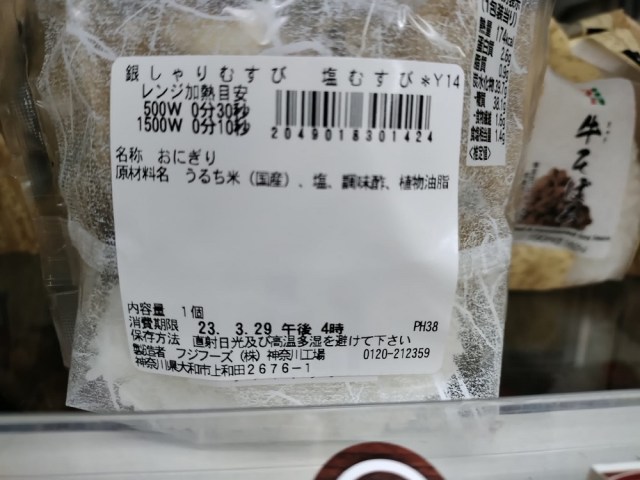
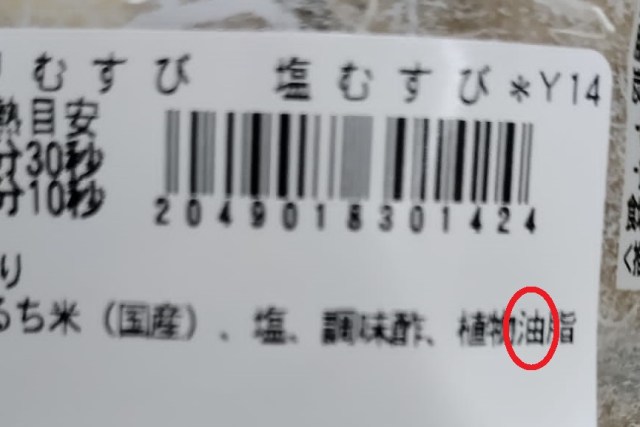
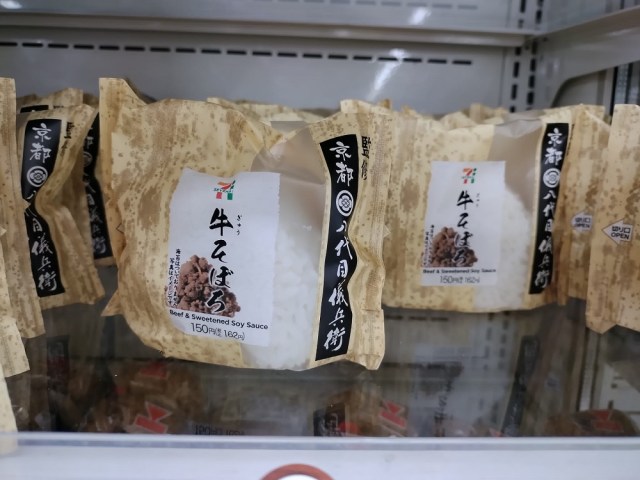
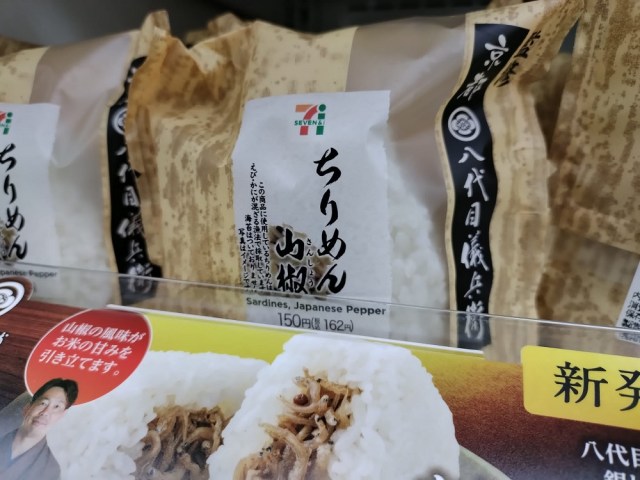
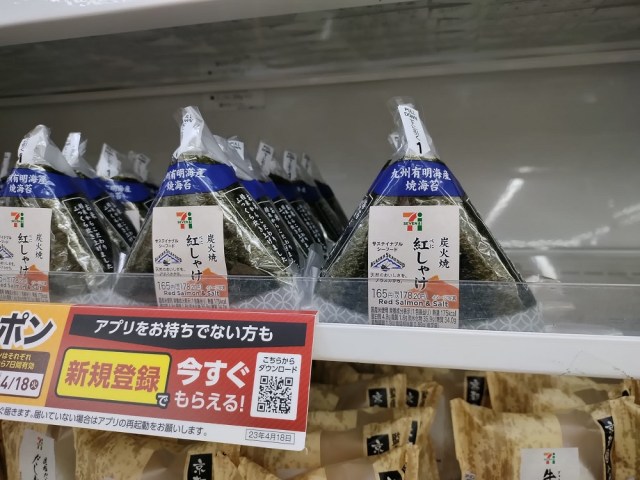
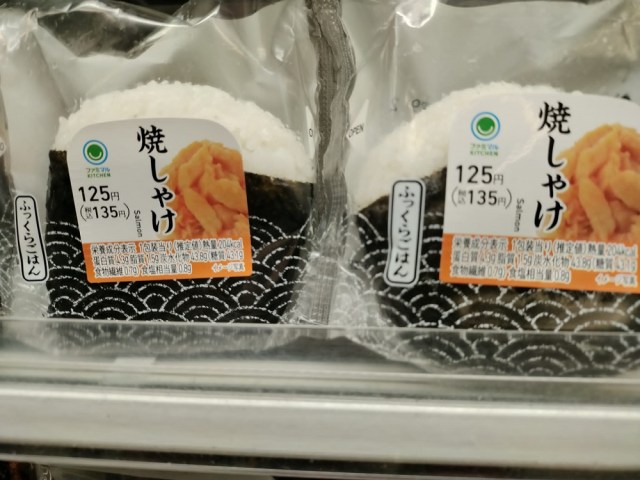
 Survey ranks convenience store rice balls – salmon, sea-dwelling poultry & plants steal the show
Survey ranks convenience store rice balls – salmon, sea-dwelling poultry & plants steal the show Are high-end convenience store rice balls really packed with more ingredients?
Are high-end convenience store rice balls really packed with more ingredients? Are Family Mart’s new “exquisite” rice balls worth the high price tag?
Are Family Mart’s new “exquisite” rice balls worth the high price tag? Japanese convenience store issues rice ball recall, foodies would’ve loved to eat them anyway
Japanese convenience store issues rice ball recall, foodies would’ve loved to eat them anyway Japan Railways recently revealed ramen-style rice balls in its convenience stores
Japan Railways recently revealed ramen-style rice balls in its convenience stores We revisited Sweets Paradise after a decade to see if Japan’s dessert buffet still delivers
We revisited Sweets Paradise after a decade to see if Japan’s dessert buffet still delivers That time Seiji called JASRAC to ask why he didn’t get paid royalties for his song being on TV
That time Seiji called JASRAC to ask why he didn’t get paid royalties for his song being on TV The best Starbucks Japan Frappuccinos we want to drink again in 2026
The best Starbucks Japan Frappuccinos we want to drink again in 2026 Hayao Miyazaki says Happy New Year to Studio Ghibli fans with new art for Year of the Horse
Hayao Miyazaki says Happy New Year to Studio Ghibli fans with new art for Year of the Horse Tokyo day-trip hot springs: Beautiful Mt. Fuji-view bath is just one highway bus stop from Shibuya
Tokyo day-trip hot springs: Beautiful Mt. Fuji-view bath is just one highway bus stop from Shibuya One of Japan’s rarest, craziest pay phones is hanging out in a tree-shaped phone booth【Photos】
One of Japan’s rarest, craziest pay phones is hanging out in a tree-shaped phone booth【Photos】 Is the all-you-can-eat KFC buffet in Tokyo really as good as they say it is?
Is the all-you-can-eat KFC buffet in Tokyo really as good as they say it is? You can now visit a recreation of Evangelion’s Tokyo-3 and live there in miniature form in【Pics】
You can now visit a recreation of Evangelion’s Tokyo-3 and live there in miniature form in【Pics】 Bone-chilling taxi tours of Japan’s most haunted places now include all-night course, livestreams
Bone-chilling taxi tours of Japan’s most haunted places now include all-night course, livestreams Harajuku’s new permanent Tamagotchi shop is filled with cuteness and a surprising lack of poop
Harajuku’s new permanent Tamagotchi shop is filled with cuteness and a surprising lack of poop Starbucks Japan ready to get Year of the Horse started with adorable drinkware and plushies【Pics】
Starbucks Japan ready to get Year of the Horse started with adorable drinkware and plushies【Pics】 Cyberpunk anime meets traditional culture in Ghost in the Shell gold leaf Japanese changing screens
Cyberpunk anime meets traditional culture in Ghost in the Shell gold leaf Japanese changing screens 7 great places to see Mt. Fuji from without having to climb it
7 great places to see Mt. Fuji from without having to climb it Hello Kitty Choco Egg figures are an adorable trip through three periods of Japanese pop culture【Pics】
Hello Kitty Choco Egg figures are an adorable trip through three periods of Japanese pop culture【Pics】 7-Eleven Japan’s ramen-cooking robot whipped us up a bowl of noodles【Taste test】
7-Eleven Japan’s ramen-cooking robot whipped us up a bowl of noodles【Taste test】 We found possibly the quietest Japanese-style hotel in Tokyo’s bustling Shinjuku district
We found possibly the quietest Japanese-style hotel in Tokyo’s bustling Shinjuku district Japan’s otoshidama tradition of giving kids money at New Year’s gets a social welfare upgrade
Japan’s otoshidama tradition of giving kids money at New Year’s gets a social welfare upgrade Sumo Sanrio! Hello Kitty and pals team up with Japan Sumo Association for new merch【Pics】
Sumo Sanrio! Hello Kitty and pals team up with Japan Sumo Association for new merch【Pics】 More Than a Capsule Stay: Why Solo Travelers Choose “global cabin Yokohama Chinatown”
More Than a Capsule Stay: Why Solo Travelers Choose “global cabin Yokohama Chinatown” Japan’s oldest largetooth sawfish in captivity back on display in Mie Prefecture
Japan’s oldest largetooth sawfish in captivity back on display in Mie Prefecture 7-Eleven Japan starts new temporary luggage storage service in over 300 branches
7-Eleven Japan starts new temporary luggage storage service in over 300 branches Disillusionment at Tsukiji’s tourist-target prices led us to a great ramen restaurant in Tokyo
Disillusionment at Tsukiji’s tourist-target prices led us to a great ramen restaurant in Tokyo Starbucks teams up with 166-year-old Kyoto doll maker for Year of the Horse decorations【Photos】
Starbucks teams up with 166-year-old Kyoto doll maker for Year of the Horse decorations【Photos】 Tokyo considering law requiring more trash cans following litter increase in heavily touristed area
Tokyo considering law requiring more trash cans following litter increase in heavily touristed area Tokyo’s Tsukiji sushi neighborhood asks tour groups to stay away for the rest of the month
Tokyo’s Tsukiji sushi neighborhood asks tour groups to stay away for the rest of the month Tokyo event lets you travel back in time, for free, to celebrate 100 years since Showa era start
Tokyo event lets you travel back in time, for free, to celebrate 100 years since Showa era start Sanrio theme park in Japan announces plans to expand into a Sanrio resort
Sanrio theme park in Japan announces plans to expand into a Sanrio resort Japan may add Japanese language proficiency, lifestyle classes to permanent foreign resident requirements
Japan may add Japanese language proficiency, lifestyle classes to permanent foreign resident requirements Stamina-destroying “Paralysis Noodles” are Tokyo’s newest over-the-top ramen innovation
Stamina-destroying “Paralysis Noodles” are Tokyo’s newest over-the-top ramen innovation Survey asks foreign tourists what bothered them in Japan, more than half gave same answer
Survey asks foreign tourists what bothered them in Japan, more than half gave same answer Japan’s human washing machines will go on sale to general public, demos to be held in Tokyo
Japan’s human washing machines will go on sale to general public, demos to be held in Tokyo Japan’s deadliest food claims more victims, but why do people keep eating it for New Year’s?
Japan’s deadliest food claims more victims, but why do people keep eating it for New Year’s? We deeply regret going into this tunnel on our walk in the mountains of Japan
We deeply regret going into this tunnel on our walk in the mountains of Japan Studio Ghibli releases Kodama forest spirits from Princess Mononoke to light up your home
Studio Ghibli releases Kodama forest spirits from Princess Mononoke to light up your home Major Japanese hotel chain says reservations via overseas booking sites may not be valid
Major Japanese hotel chain says reservations via overseas booking sites may not be valid Put sesame oil in your coffee? Japanese maker says it’s the best way to start your day【Taste test】
Put sesame oil in your coffee? Japanese maker says it’s the best way to start your day【Taste test】 No more using real katana for tourism activities, Japan’s National Police Agency says
No more using real katana for tourism activities, Japan’s National Police Agency says Starbucks Japan reveals new sakura drinkware collection, inspired by evening cherry blossoms
Starbucks Japan reveals new sakura drinkware collection, inspired by evening cherry blossoms Updated cherry blossom forecast shows extra-long sakura season for Japan this year
Updated cherry blossom forecast shows extra-long sakura season for Japan this year Japanese convenience store packs a whole bento into an onigiri rice ball
Japanese convenience store packs a whole bento into an onigiri rice ball In celebration of Onigiri Day, we compare rice balls from three different convenience stores
In celebration of Onigiri Day, we compare rice balls from three different convenience stores Which Japanese convenience store has the best plain onigiri rice balls?
Which Japanese convenience store has the best plain onigiri rice balls? Japanese convenience store’s newest rice ball filling: Nothing at all, and why we’re OK with that
Japanese convenience store’s newest rice ball filling: Nothing at all, and why we’re OK with that Japanese convenience store showdown – Who’s got the best ikura rice balls?【Taste test】
Japanese convenience store showdown – Who’s got the best ikura rice balls?【Taste test】 The 10 best types of onigiri rice balls to try in Japan【Survey】
The 10 best types of onigiri rice balls to try in Japan【Survey】 Should you warm up your convenience store onigiri rice balls in the microwave?【Taste test】
Should you warm up your convenience store onigiri rice balls in the microwave?【Taste test】 Japanese convenience store releases a new bento sandwich, but is it better than a bento rice ball?
Japanese convenience store releases a new bento sandwich, but is it better than a bento rice ball? Which Japanese convenience store has the best salted onigiri rice balls?
Which Japanese convenience store has the best salted onigiri rice balls? Weiner Onigiri: Japanese convenience store rice ball has a surprise in store for Mr Sato
Weiner Onigiri: Japanese convenience store rice ball has a surprise in store for Mr Sato The difference between onigiri rice balls in Tokyo and Osaka
The difference between onigiri rice balls in Tokyo and Osaka It’s a Japanese boxed lunch in the palm of your hand with the new bento rice ball
It’s a Japanese boxed lunch in the palm of your hand with the new bento rice ball Problem solved: How to open a Japanese convenience store onigiri rice ball【Pics and video】
Problem solved: How to open a Japanese convenience store onigiri rice ball【Pics and video】 Bizarre or brilliant? Takoyaki and okonomiyaki rice balls available in convenience stores now
Bizarre or brilliant? Takoyaki and okonomiyaki rice balls available in convenience stores now The best-selling rice ball at Family Mart is…SPAM onigiri?
The best-selling rice ball at Family Mart is…SPAM onigiri?
Leave a Reply